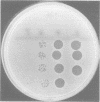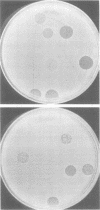Abstract
Yersinia enterocolitica is listed as a single species in Bergey's Manual of Determinative Bacteriology, but has recently been split into "true" Y. enterocolitica, Y. kristensenii, Y. intermedia, and Y. frederiksenii. From 48 bacteriophages isolated from raw sewage, 24 were chosen as being the most useful for differentiating strains within the four Yersinia species. The composite set of 24 phages typed 92% of 236 Y. enterocolitica strains, 100% of 16 Y. kristensenii strains, 97% of 29 Y. frederiksenii strains, and 90% of 20 Y. intermedia strains. The most common phage type in any of the groups contained 22% of the strains tested, but most of the phage types contained greater than 5% of the strains. The new typing schema was tested in three outbreaks of Y. enterocolitica, and the results agreed well with serotyping and epidemiological findings. In the same outbreaks, biotyping (API 20E profiles; Analytab Products, Plainview, N.Y.) and antibiograms were less reliable markers and probably should be used only in conjunction with serotyping or phage typing or both. Caution should be used in identifying cultures of Y. frederiksenii and Y. intermedia with the API 20E system, since the tests at 37 degrees C for L-rhamnose and melibiose fermentation are often delayed past 24 h, which is the cut-off point for the final reading in the API system. There were distinct differences in the susceptibilities of Y. enterocolitica and Y. kristensenii to ampicillin, carbenicillin, and cephalothin, which adds further support for classifying the latter as a separate species.
Full text
PDF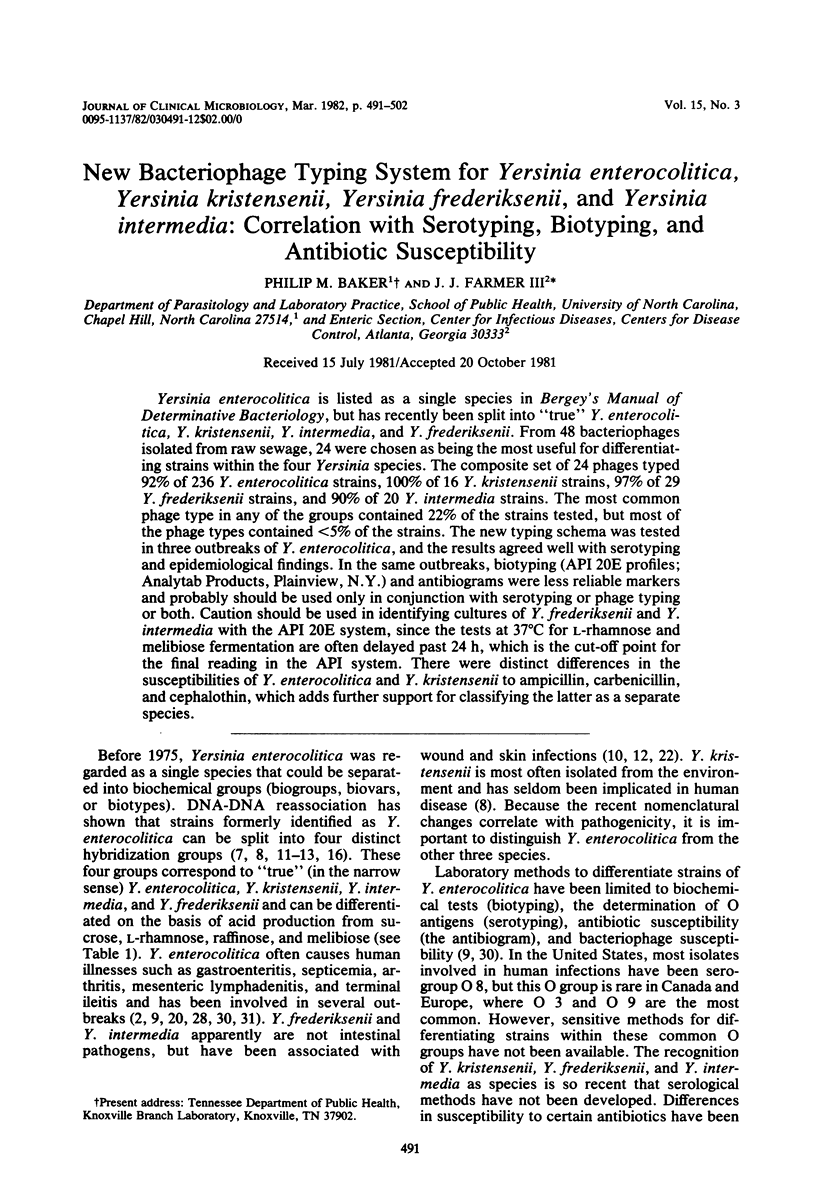
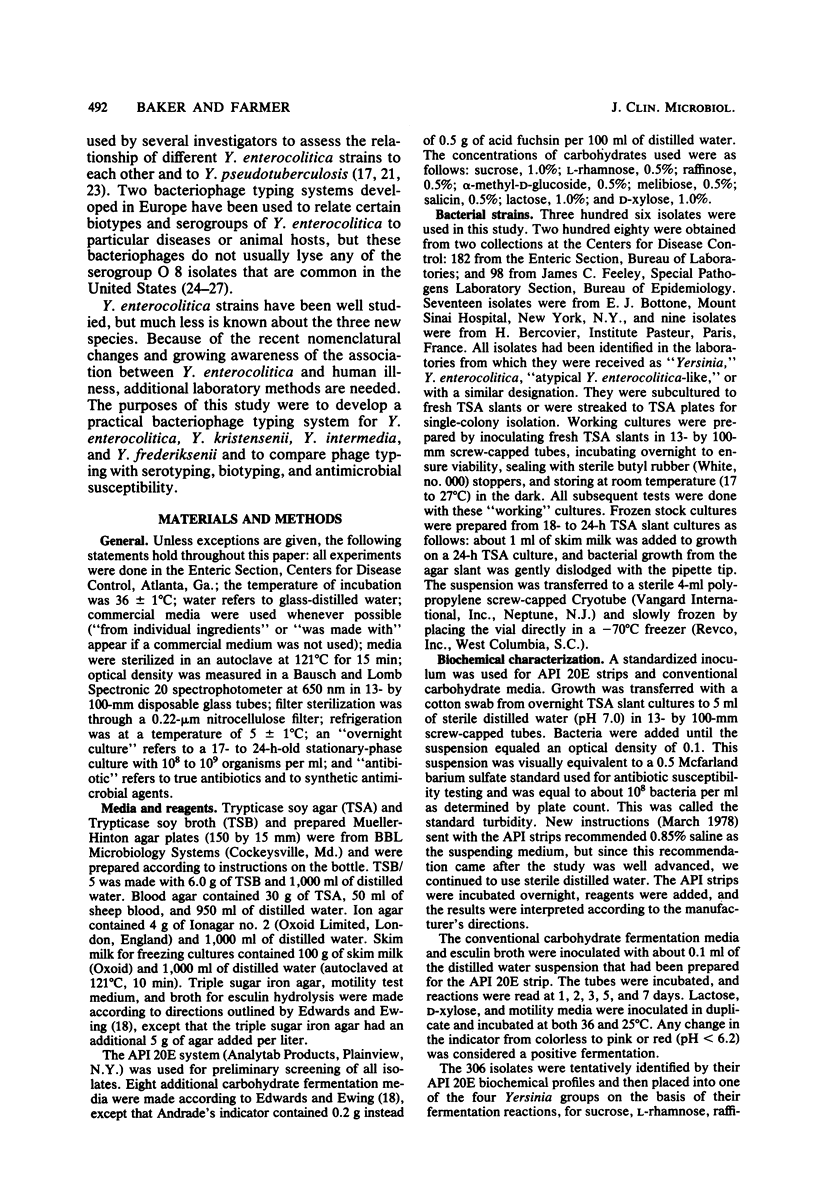
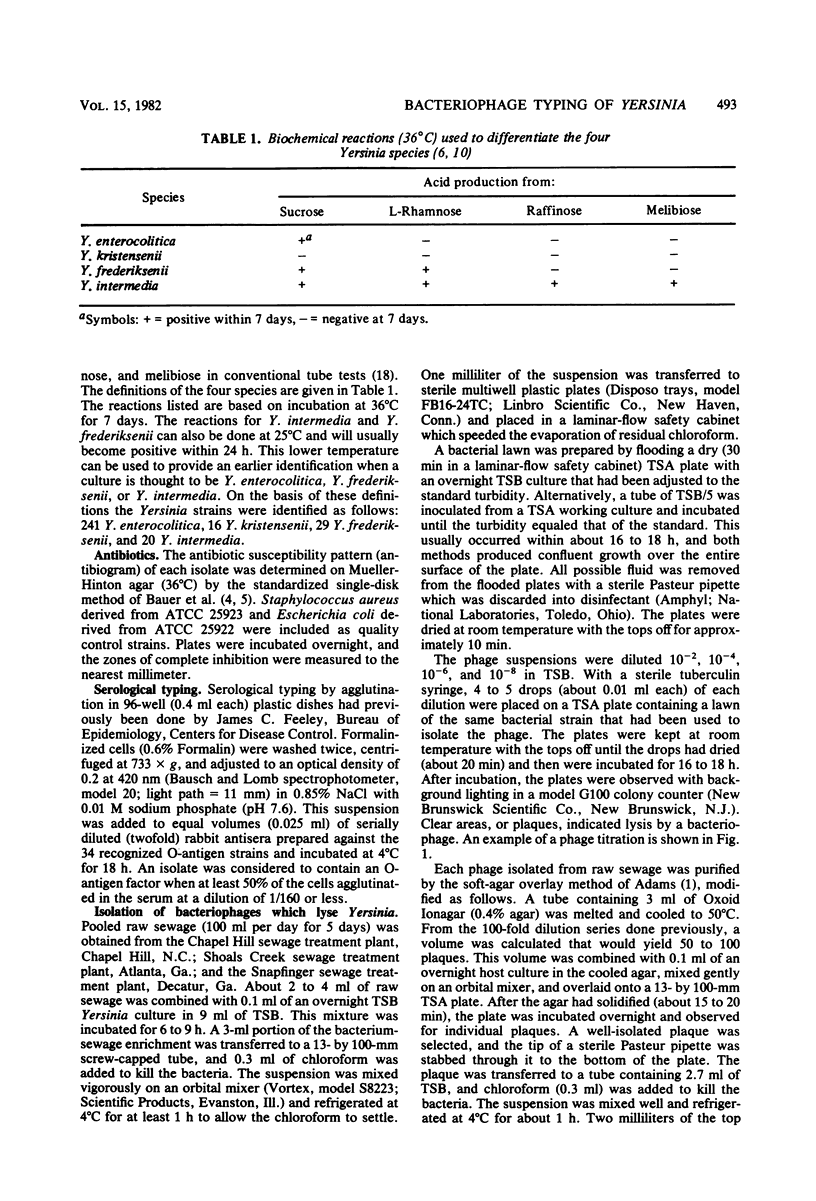
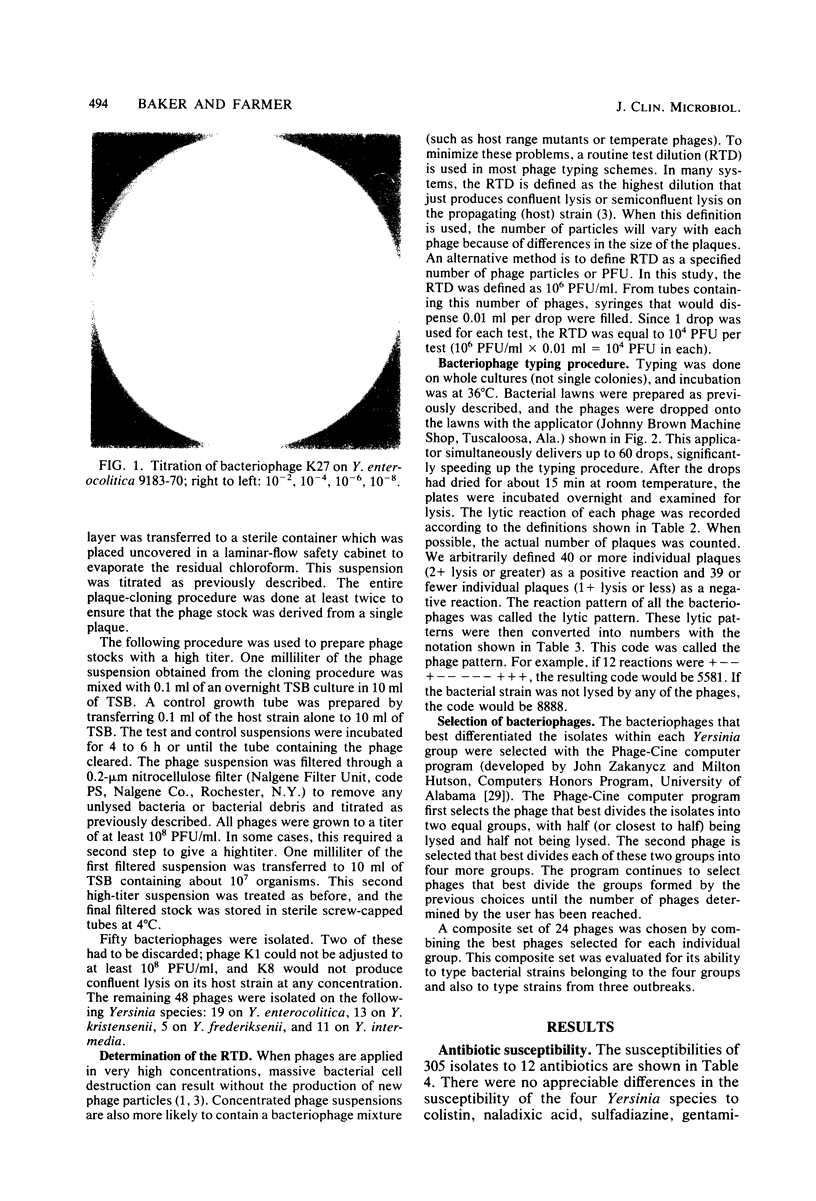

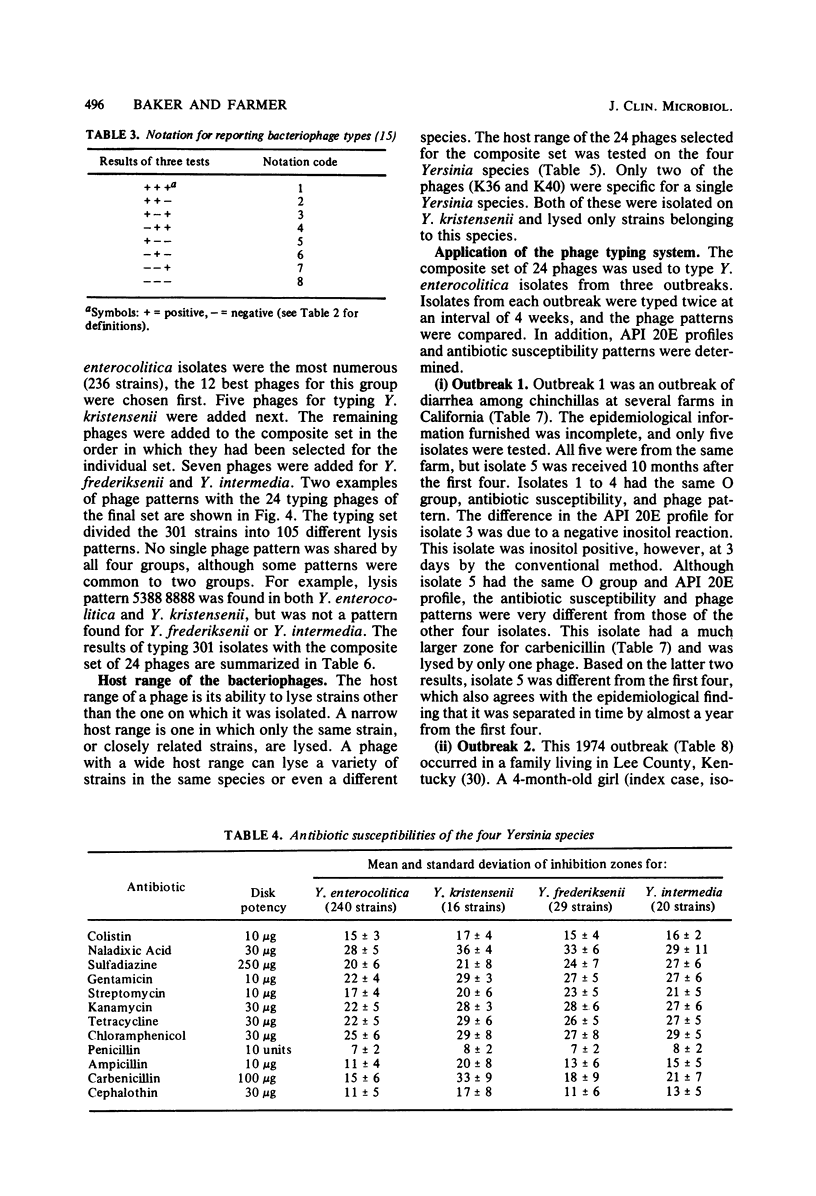
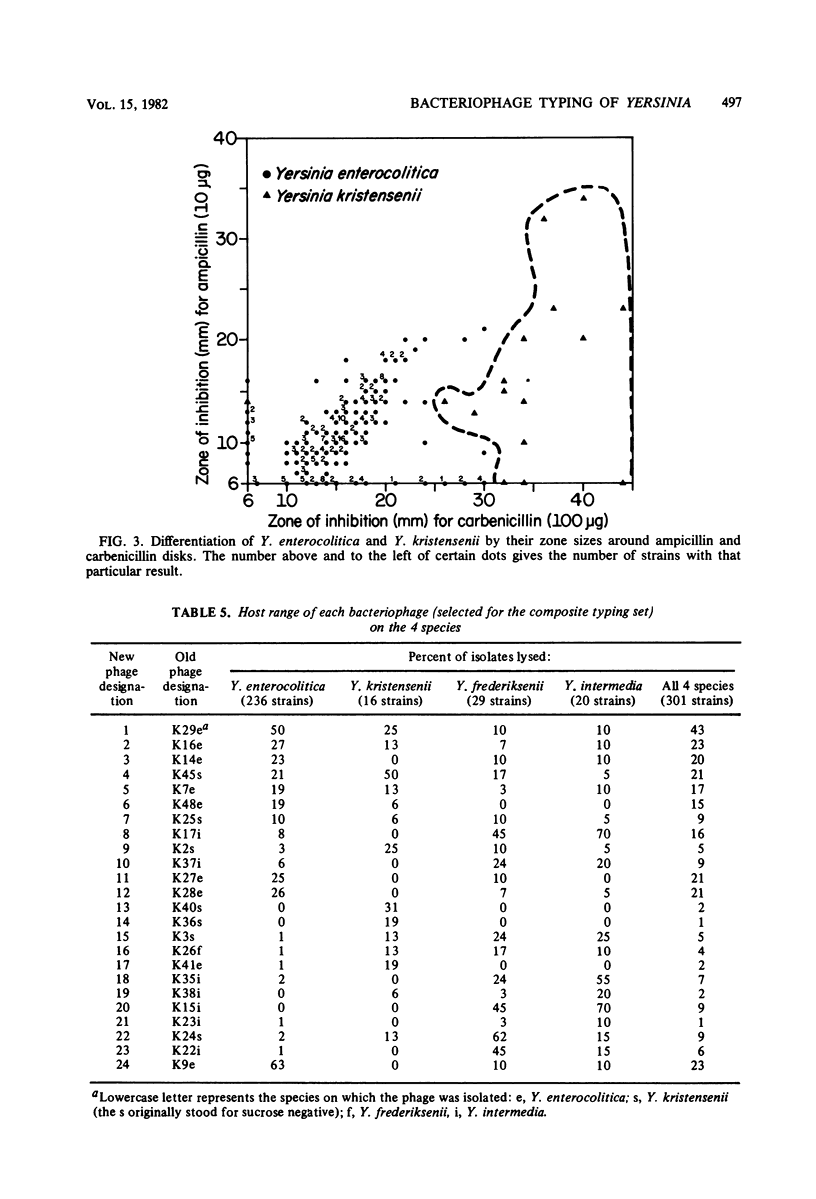
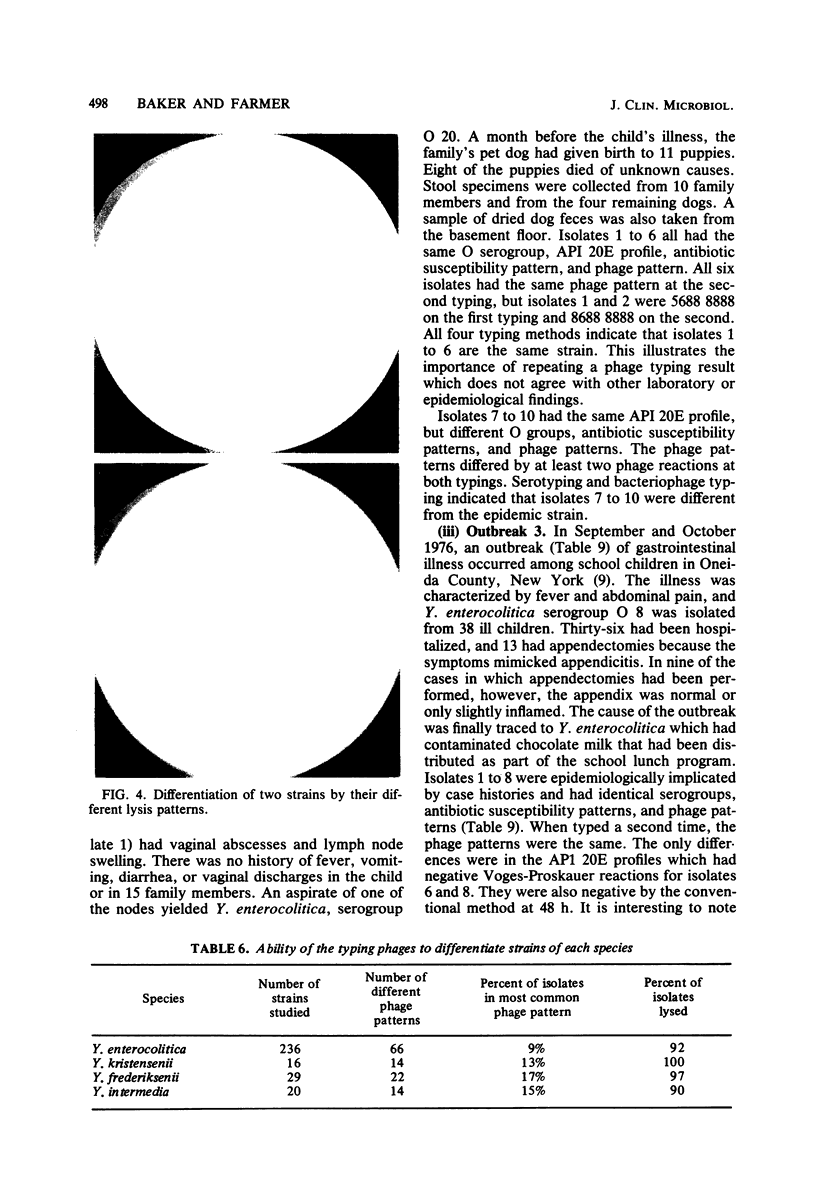
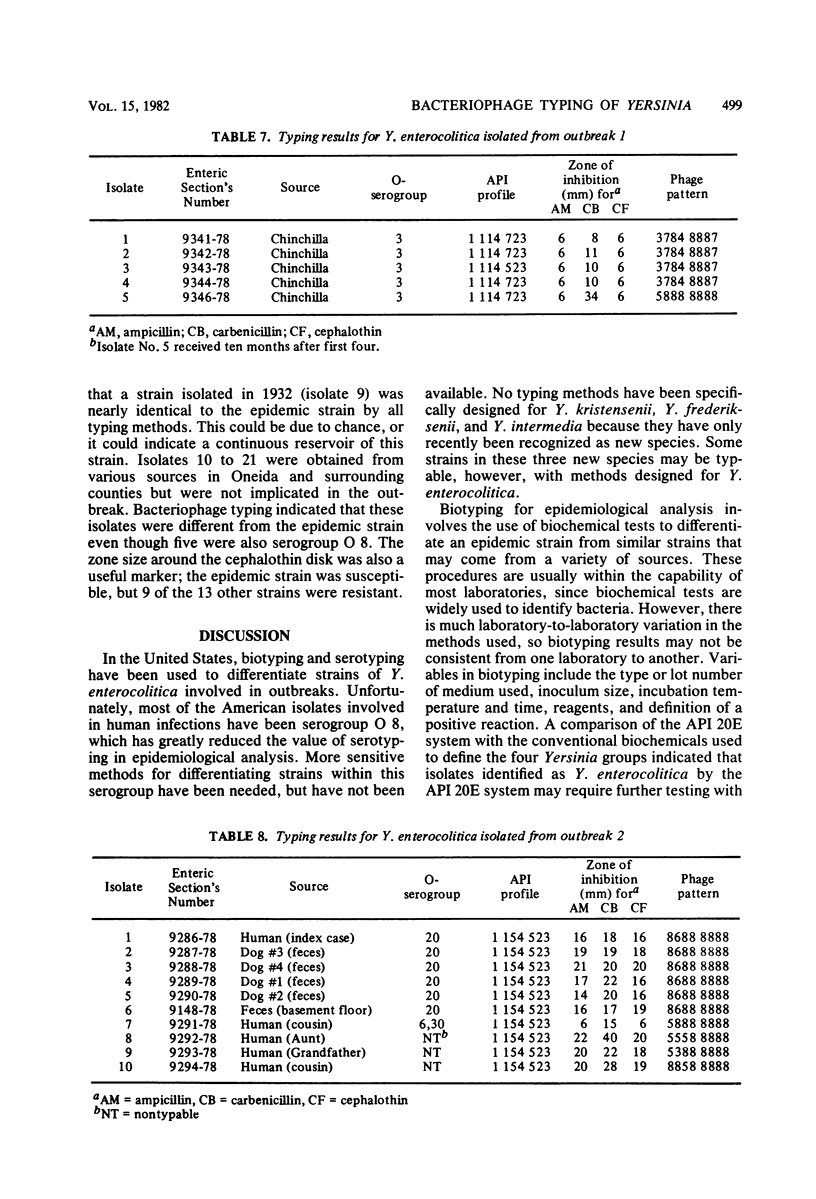
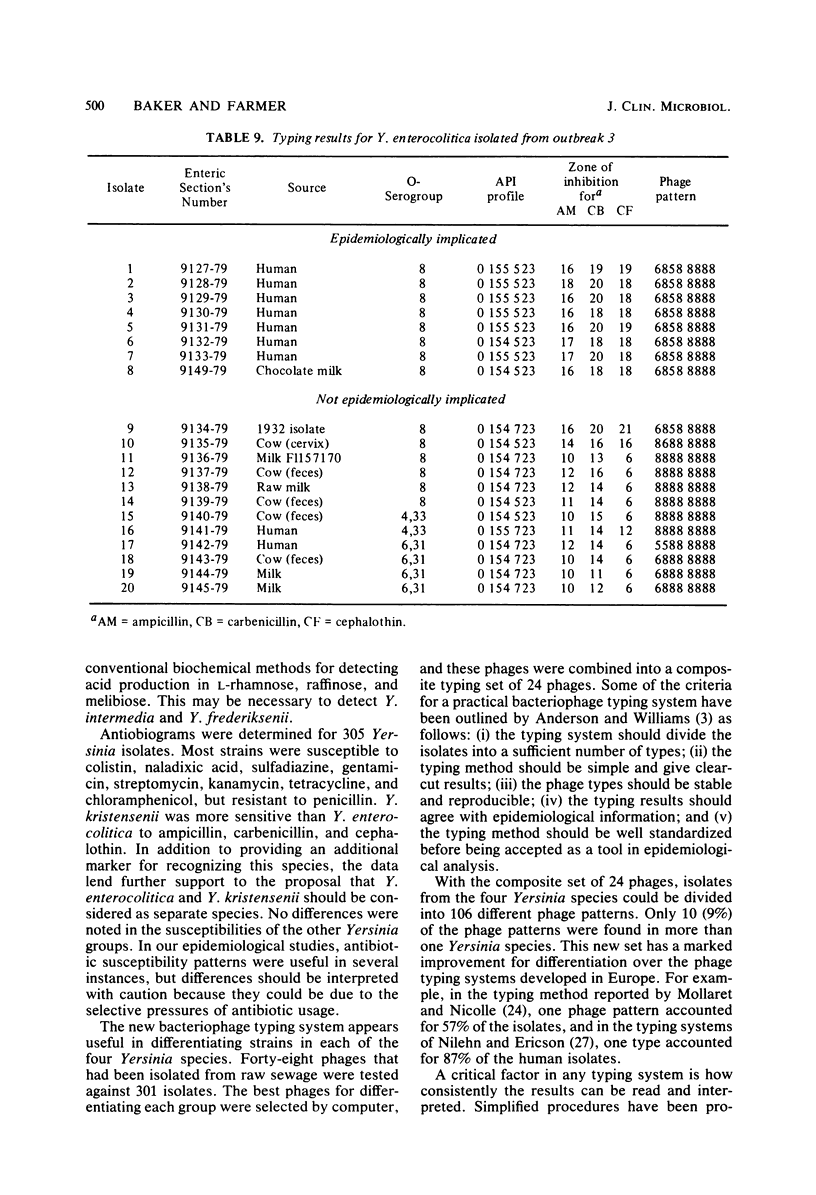
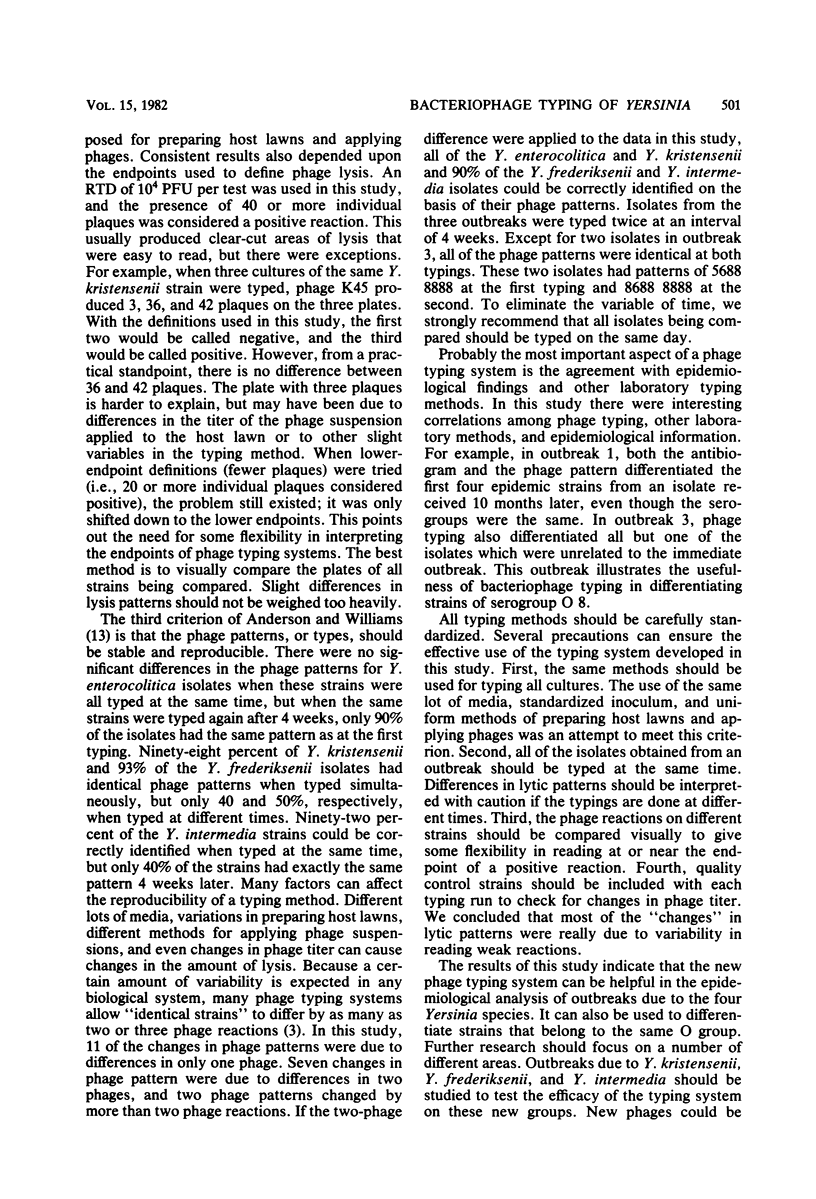
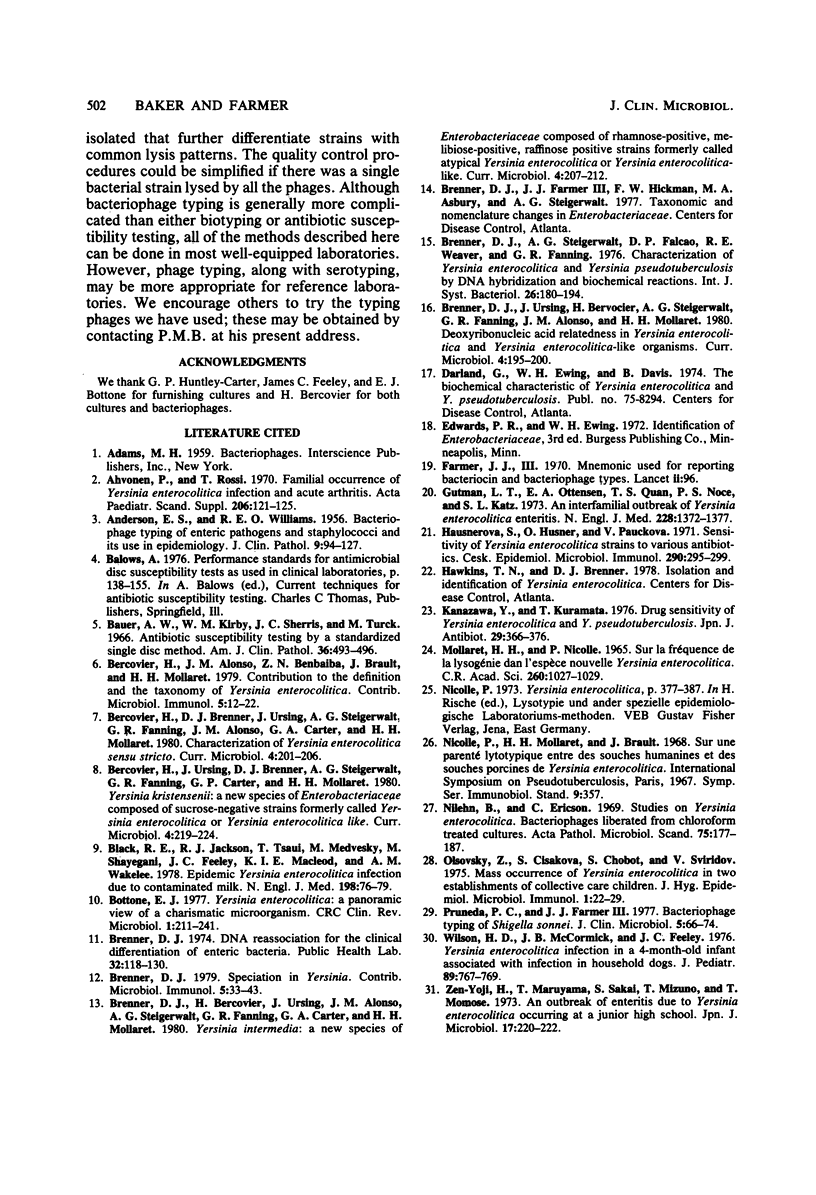
Images in this article
Selected References
These references are in PubMed. This may not be the complete list of references from this article.
- ANDERSON E. S., WILLIAMS R. E. Bacteriophage typing of enteric pathogens and staphylococci and its use in epidemiology. J Clin Pathol. 1956 May;9(2):94–127. doi: 10.1136/jcp.9.2.94. [DOI] [PMC free article] [PubMed] [Google Scholar]
- Ahvonen P., Rossi T. Familial occurrence of Yersinia enterocolitica infection and acute arthritis. Acta Paediatr Scand Suppl. 1970;206(Suppl):121+–121+. doi: 10.1111/j.1651-2227.1970.tb14642.x. [DOI] [PubMed] [Google Scholar]
- Bauer A. W., Kirby W. M., Sherris J. C., Turck M. Antibiotic susceptibility testing by a standardized single disk method. Am J Clin Pathol. 1966 Apr;45(4):493–496. [PubMed] [Google Scholar]
- Bercovier H., Alonso J. M., Bentaiba Z. N., Brault J., Mollaret H. H. Contribution to the definition and the taxonomy of Yersinia enterocolitica. Contrib Microbiol Immunol. 1979;5:12–22. [PubMed] [Google Scholar]
- Black R. E., Jackson R. J., Tsai T., Medvesky M., Shayegani M., Feeley J. C., MacLeod K. I., Wakelee A. M. Epidemic Yersinia enterocolitica infection due to contaminated chocolate milk. N Engl J Med. 1978 Jan 12;298(2):76–79. doi: 10.1056/NEJM197801122980204. [DOI] [PubMed] [Google Scholar]
- Bottone E. J. Yersinia enterocolitica: a panoramic view of a charismatic microorganism. CRC Crit Rev Microbiol. 1977;5(2):211–241. doi: 10.3109/10408417709102312. [DOI] [PubMed] [Google Scholar]
- Brenner D. J. Speciation in Yersinia. Contrib Microbiol Immunol. 1979;5:33–43. [PubMed] [Google Scholar]
- Gutman L. T., Ottesen E. A., Quan T. J., Noce P. S., Katz S. L. An inter-familial outbreak of Yersinia enterocolitica enteritis. N Engl J Med. 1973 Jun 28;288(26):1372–1377. doi: 10.1056/NEJM197306282882604. [DOI] [PubMed] [Google Scholar]
- Hausnerová S., Hausner O., Paucková V. Citlivost kmenů Yersinia enterocolitica na nekterá antibiotika. Cesk Epidemiol Mikrobiol Imunol. 1971 Nov;20(6):295–299. [PubMed] [Google Scholar]
- Kanazawa Y., Kuramata T. [Drug sensitivity of Yersinia enterocolitica and Yersinia pseudotuberculosis]. Jpn J Antibiot. 1976 Apr;29(4):366–376. [PubMed] [Google Scholar]
- MOLLARET H., NICOLLE P. SUR LA FR'EQUENCE DE LA LYSOG'ENIE DANS L'ESP'ECE NOUVELLE YERSINIA ENTEROCOLITICA. C R Hebd Seances Acad Sci. 1965 Jan 18;260:1027–1029. [PubMed] [Google Scholar]
- Niléhn B., Ericson C. Studies on Yersinia enterocolitica. Bacteriophages liberated from chloroform treated cultures. Acta Pathol Microbiol Scand. 1969;75(1):177–187. [PubMed] [Google Scholar]
- Olsovský Z., Olsáková V., Chobot S., Sviridov V. Mass occurrence of Yersinia enterocolitica in two establishments of collective care of children. J Hyg Epidemiol Microbiol Immunol. 1975;19(1):22–29. [PubMed] [Google Scholar]
- Pruneda R. C., Farmer J. J., 3rd Bacteriophage typing of Shigella sonnei. J Clin Microbiol. 1977 Jan;5(1):66–74. doi: 10.1128/jcm.5.1.66-74.1977. [DOI] [PMC free article] [PubMed] [Google Scholar]
- Wilson H. D., McCormick J. B., Feeley J. C. Yersinia enterocolitica infection in a 4-month-old infant associated with infection in household dogs. J Pediatr. 1976 Nov;89(5):767–769. doi: 10.1016/s0022-3476(76)80799-8. [DOI] [PubMed] [Google Scholar]
- Zenyoji H., Maruyama T., Sakai S., Kimura S., Mizuno T. An outbreak of enteritis due to Yersinia enterocolitica occurring at a junior high school. Jpn J Microbiol. 1973 May;17(3):220–222. doi: 10.1111/j.1348-0421.1973.tb00730.x. [DOI] [PubMed] [Google Scholar]



